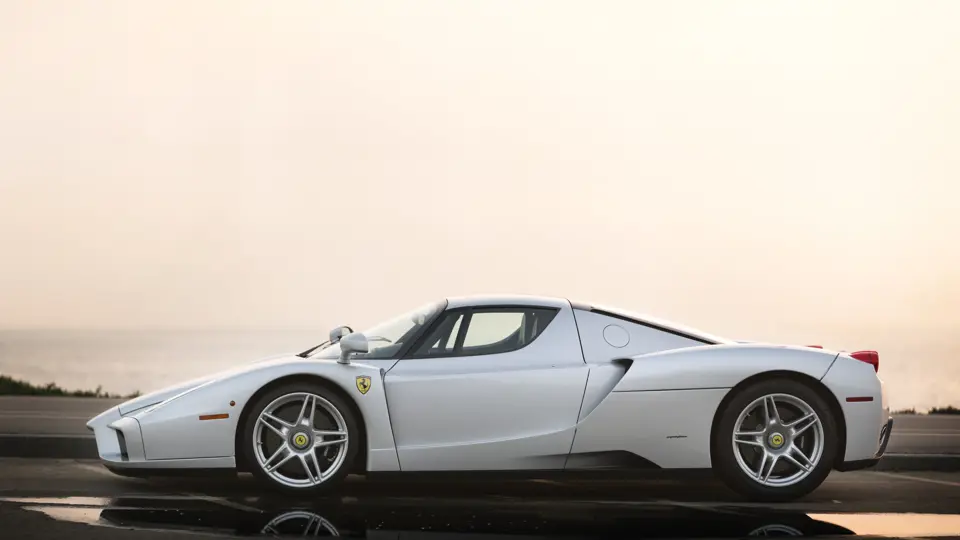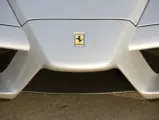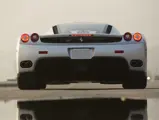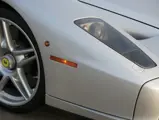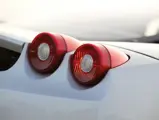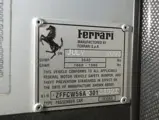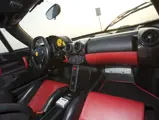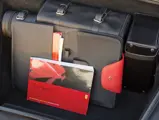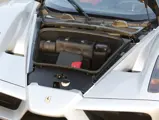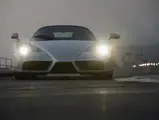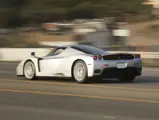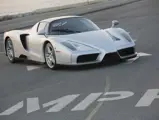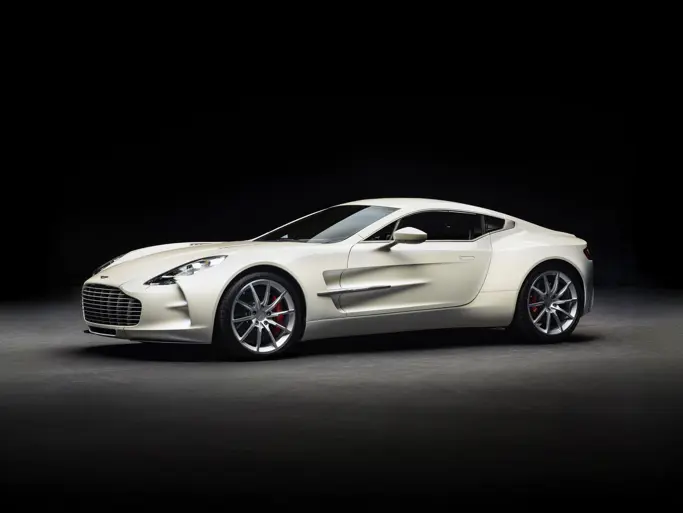660 bhp, 5,998 cc V-12 engine with double overhead camshafts and four valves per cylinder, Bosch Motronic engine management and electronic fuel-injection, six-speed computer-controlled sequential gearbox, limited-slip differential and traction control, front and rear pushrod-actuated double wishbones with horizontal coil-spring damper units, and four-wheel, ventilated, carbon-ceramic disc brakes and ABS. Wheelbase: 104.3 in.
• One of only 400 examples built
• Reportedly one of six silver cars and the only one that exists in the United States
• Just over 9,000 miles from new
The Ferrari Enzo created nothing short of a media frenzy when it was first introduced at the 2002 Paris Auto Show. The design was powerful, if not polarizing, to many; it was a classic example of form following function. The outrageous silhouette was a byproduct of packaging and aerodynamic requirements. Quite literally, everything in the design would draw upon Ferrari’s Formula One experience.
The magnificent automobile marked a new direction in styling for Ferrari. From the outset, Luca Cordero di Montemezolo pushed his designers and engineers to go just a little further, knowing that they could always back off a bit if necessary. Pininfarina’s design chief, Lorenzo Ramaciotti, chose to have an internal design competition stressing both aerodynamics and a shape even more aggressive than that of the preceding F50. Beginning with approximately two dozen proposals, the number was cut down to just two. Both were presented to Ferrari management in the summer of 1998. The partners, however, agreed to push the envelope further still; what resulted would become the Enzo’s signature front clip. Ferrari also asked for the rear wing to be removed, resulting in hundreds of hours spent in the wind tunnel tuning both the top and the bottom of the car in an effort to provide maximum down force with minimal drag. Twin venturi channels beneath the chassis would accelerate airflow for enhanced down force, while fins within the channels inhibit wasteful crossflow. The wind tunnel ruled and the radical shape was ultimately determined by the car’s high-performance potential. Whereas the F40 and F50 wore bodies that resembled Ferrari’s previous street models, the Enzo looked more like a machine whose sole purpose was to run the quickest lap times at the race track.
Unlike many of its contemporaries who have their wheels pushed out to the corners of the body, the Enzo’s wheels are tucked back close to the cockpit. The hood flares out from the pronounced, raised nose flanked by twin air outlets, behind which rest radiators situated just ahead of each front wheel. The front fenders terminate several inches outboard of the doors, leaving additional air outlets to enable hot air to exit from the front. This ensures that undisturbed air can be directed to help clean up the turbulent flow aft of the greenhouse, and also to make the small, low-mounted rear wing work effectively. Along with these design features, inlets on the top and bottom of the rear fenders and another pair of inlets just in front of the rear wing all manage airflow, aid in engine cooling, and promote vehicle stability at speed. Between 37 mph and 159 mph, the rear wing will extend fully and the foot-wide flaps hidden underneath the two split radiators up front stow flush with the car’s underside. As speed increases, the wing will retract gradually as the front flaps are deployed, ensuring as little change as possible to the ride height and handling stability.
The rear of the car is wide with bulges atop the fenders that start with large openings for the engine and terminate in four individual round taillights. A wide rear grille aids in engine cooling, with four tailpipes flanking the underbody diffusers that are so crucial to the down force necessary for high-speed stability. Like Ferraris that have come before, the engine is a styling element clearly visible through the rear window.
The engine is a masterpiece of design and engineering wizardry. It marks the start of a new generation of Ferrari V-12s bringing much of the company’s F1 design technology to a road car. The 65 degree V-12, displacing 5,998 cubic centimeters, would be the largest to date for Ferrari since the 712 Can Am racer, as it produces 660 horsepower at 7,800 rpm and 484 foot pounds of torque. The engine features twin overhead cams, four valves per cylinder, and a variable length induction system first used in Ferrari’s 1995 F1 engine. It is the first Ferrari powerplant to boast continuously variable exhaust-valve timing. The telescoping intake manifold that helps to boost torque is another device right out of the F1engineer’s playbook. The engine is constructed of aluminum alloy, while the cylinder walls are lined with Nikasil, and the connecting rods are made of titanium. Valve covers and the airbox are topped with carbon fiber for light weight. Providing proper lubrication is an F1-style wraparound dry sump system. Its engine weighs just 496 pounds.
In yet another nod to the car’s Formula One heritage, the Enzo would eschew Ferrari’s traditional chromed-gated, ball top shifters. The Enzo’s six-speed gearbox is electronically controlled via two carbon fiber paddles on either side of the steering wheel—just like an F1 car. The double disc clutch is blindingly fast, with gear changes taking place at 150 milliseconds, which is faster than any human can maneuver a regular transmission. The driver can select from Sport or Race modes. Reverse is engaged by pushing a steering wheel button.
Inspired by the 512M Le Mans racer, the doors operate scissor-style. Aside from leather-clad Sparco racing seats, door inserts, and door handles, the cabin is all business, with an expanse of bare carbon fiber. The steering wheel is awash in buttons enabling the Enzo’s driver to perform numerous tasks without moving his or her hand from the steering wheel. Even the turn signals are buttons on the two horizontal spokes. At the top of the wheel are seven LED lights with red and yellow indicators warning you when you need to take a closer look at the instruments. Despite having a 10,000 rpm tach, the five center lights atop the steering wheel ensure that progress from 6,000–8,000 rpm is carefully monitored. The instrument panel houses the aforementioned tach, which is flanked by an LCD display on the left and a 250 mph speedometer on the right. The instrument panel, doors, steering wheel, and center console are all carbon fiber. There is no radio, but there is climate control; an Enzo is all about the business of driving.
Ferrari would claim the world’s first integrated electronic control system encompassing the engine, gearbox, suspension, traction control, aerodynamics, brake force distribution, and anti-lock braking, with constant communication among all operating systems in order to deliver optimum performance. Another bona-fide first would be the Enzo’s carbon fiber vented Brembo four-wheel disc brakes with anti-lock circuitry.
Electronic traction control optimizes performance by allowing just the right amount of wheel spin to achieve maximum acceleration. Power is put to the pavement by massive Bridgestone Potenza RE050 Scuderia 245/35RxZR 19-inch tires, while the fronts are 345/35xZR 19-inchers. Suspension is courtesy of a four-wheel, fully independent setup with wishbones, coil springs, anti-roll bars, and cockpit-controlled telescopic dampers both in the front and rear.
Continuing the car’s F1 heritage, the entire body shell and cockpit monocoque is made of carbon fiber and aluminum honeycomb sandwich panels. Ferrari used computer-aided engineering to optimize weight by eliminating unnecessary bulk in the composite structure. In total, the car weighs just 3,009 pounds.
In contemporary road tests, Road & Track editors noted that the Enzo recorded the best acceleration figures ever for a production road car: 0–60 mph in 3.3 seconds, with ¼-mile in 11.1 seconds at 133.0 mph. Testers also commented on the confident and firm braking, recording fade-free stops from 60 and 80 mph of 109 and 188 feet, respectively. Of note, the 188 foot stop was another record shared with the 360 Modena. Yet another best was the 73.0 mph run through the slalom and a skid pad reading of 1.01 grams of lateral acceleration! Other road tests would indicate a top speed of 218 mph. Perhaps most impressive of all is how easy this Ferrari is to drive in all situations. Ferrari had broken the myth that supercars could not offer exceptional performance and still be civilized at the same time.
Naturally, the vast majority of the 400 Enzos produced were delivered in either classic Rosso Corsa or Fly Yellow. A smaller number, however, were delivered in other choice selections from the Ferrari palette, and these cars stand out even among other Enzos—not a terribly easy thing to do.
The Enzo offered here is believed one of six finished in silver, with this particular shade being Argento Nürburgring, and it is reportedly the only one in the United States. The color contrasts nicely with the black and red interior, with its seemingly alight yellow instrument dials glowing welcomingly from the dashboard.
The car was delivered new through Ferrari of Orange County, in Prancing Horse-friendly Southern California, to Jay Wilton, a onetime partner in the dealership. It was later acquired from Wilton by the present, second owner, a well-known West Coast-based aficionado of Italian sports cars, who has cared for it ever since. Driven just over 9,000 miles since new, it has, of course, been properly well looked after, with servicing as required and a recent full service before its sale here. It is supplied with the complete original tool kit and books, as the original owner would have received in 2003.
A decade ago, one had to be a favored customer at Maranello to acquire the ultimate Ferrari. Today, the Enzo remains the ultimate, but all one needs is a bidder’s pass and plane fare to Arizona.






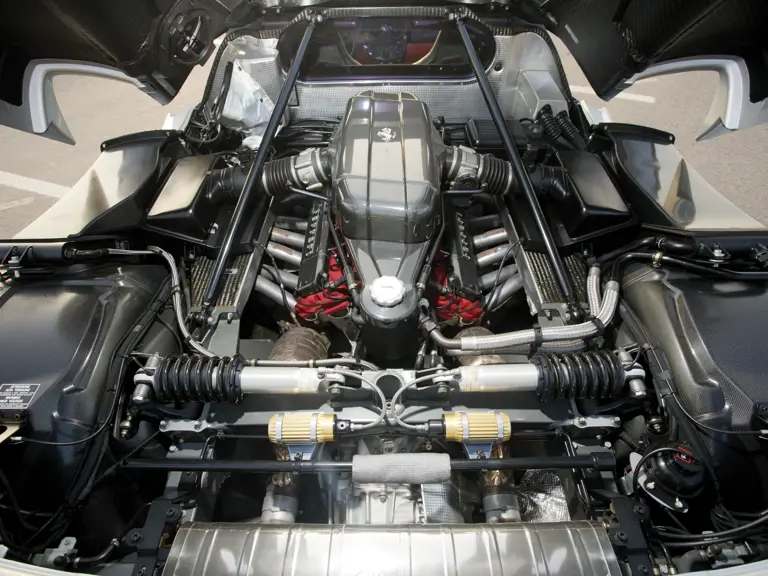
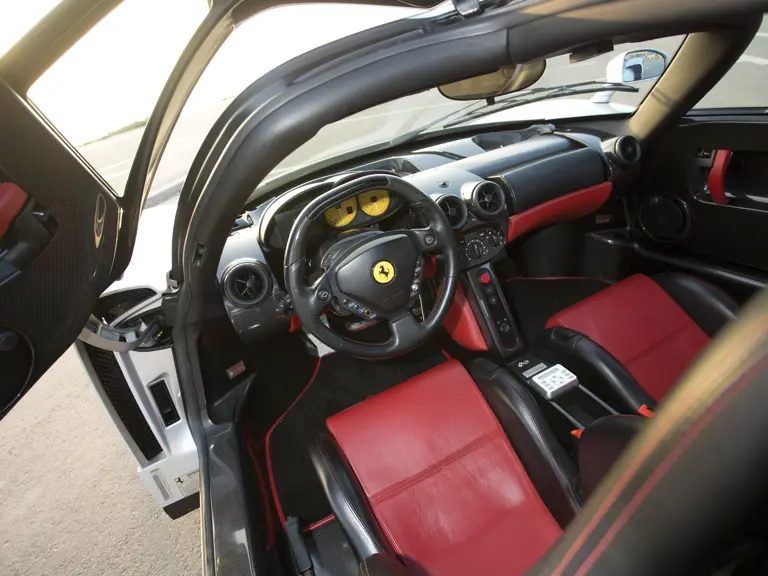

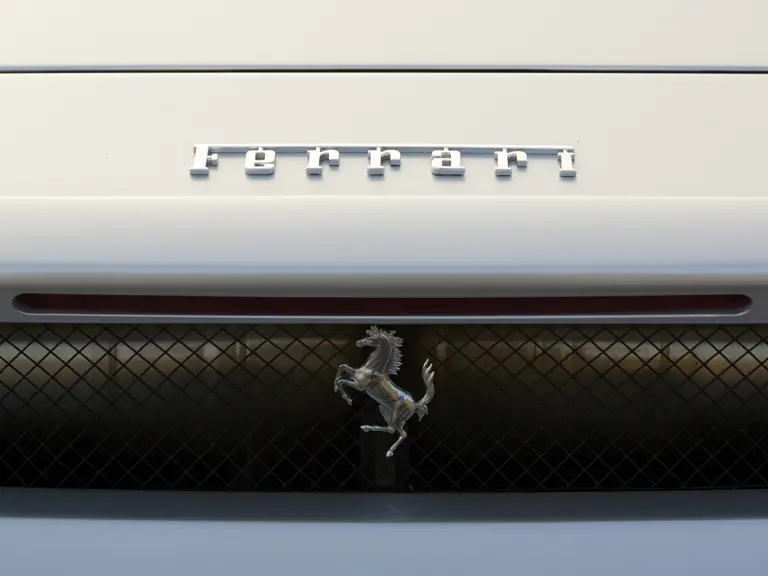



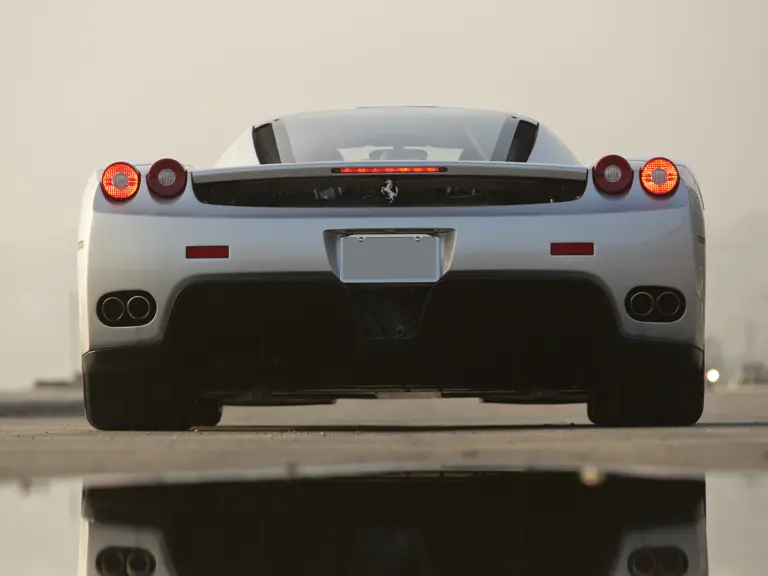
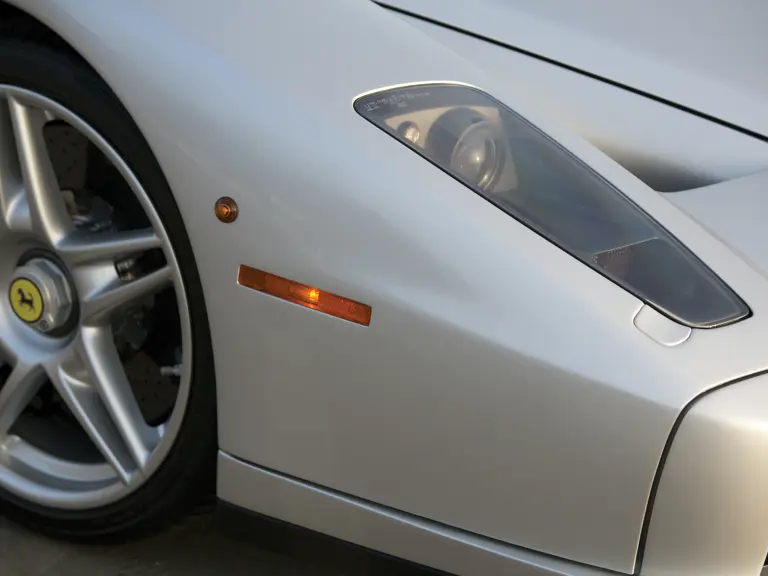

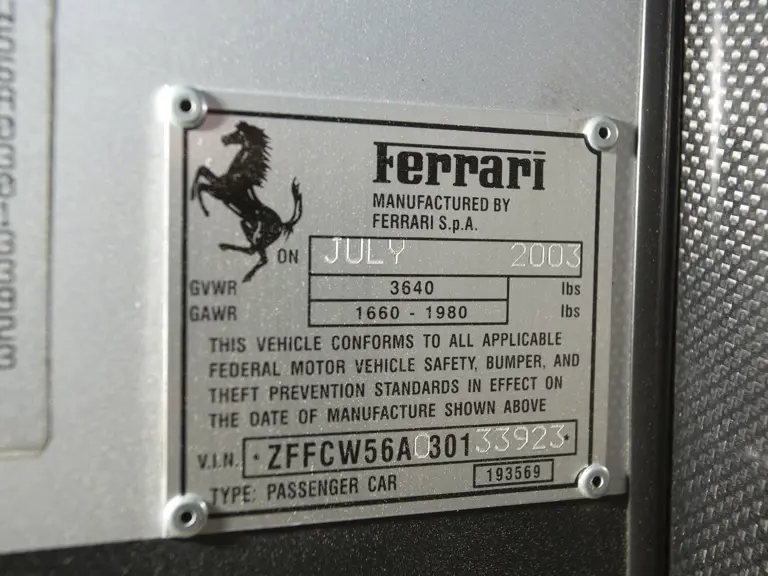
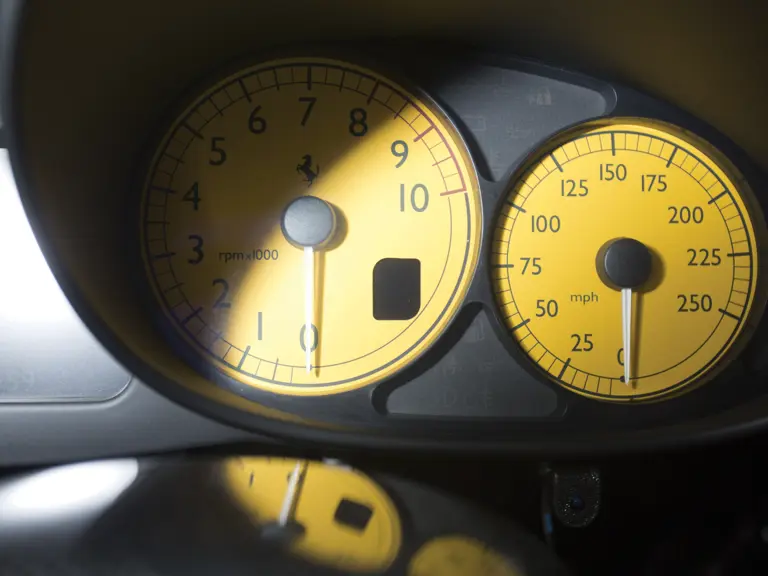
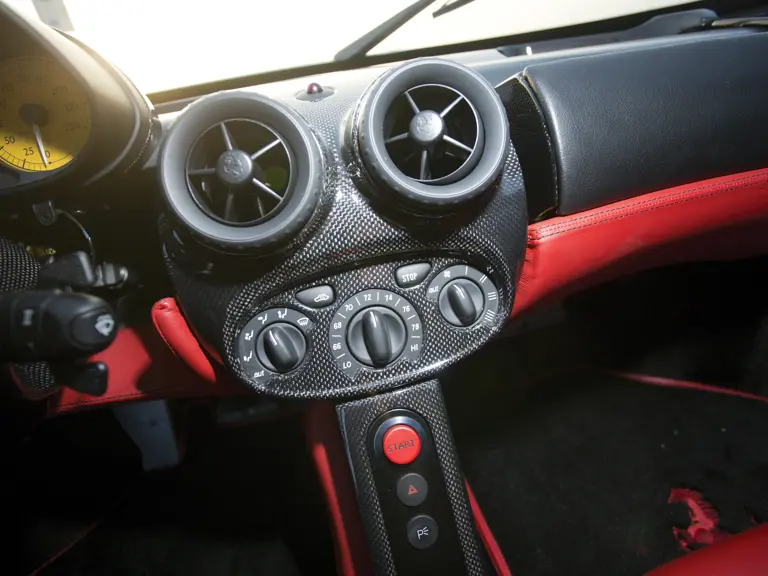
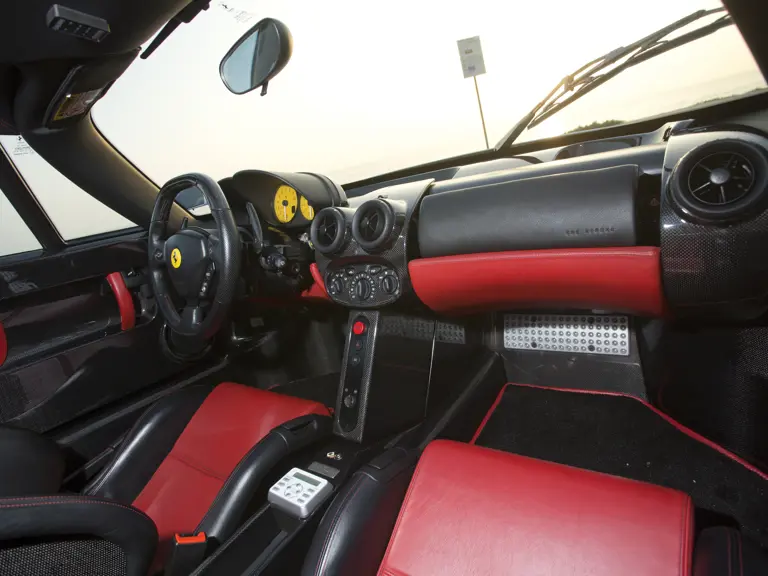

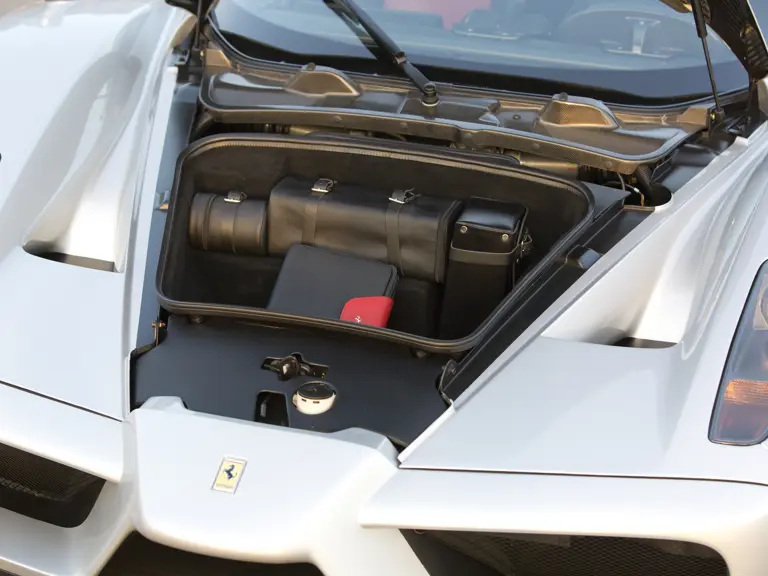
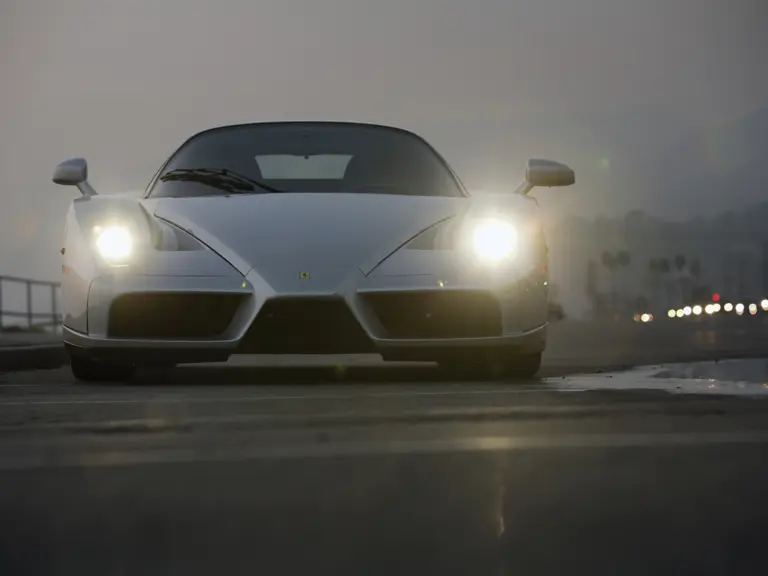

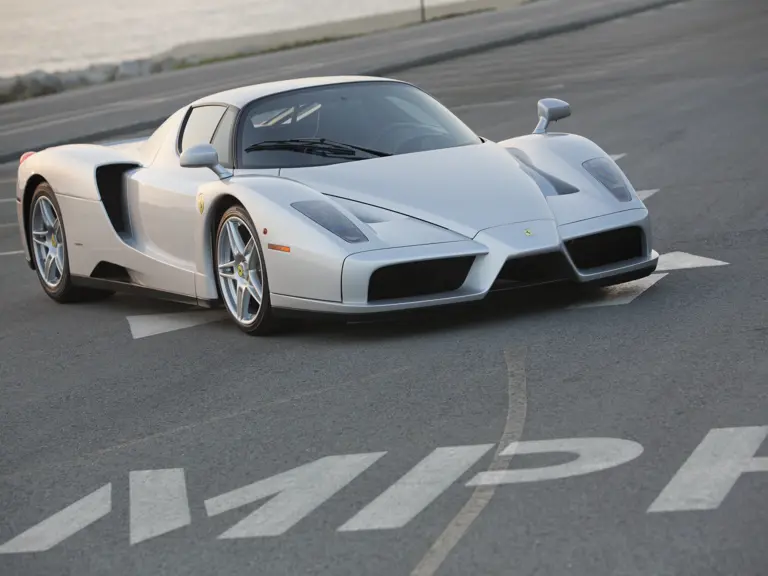

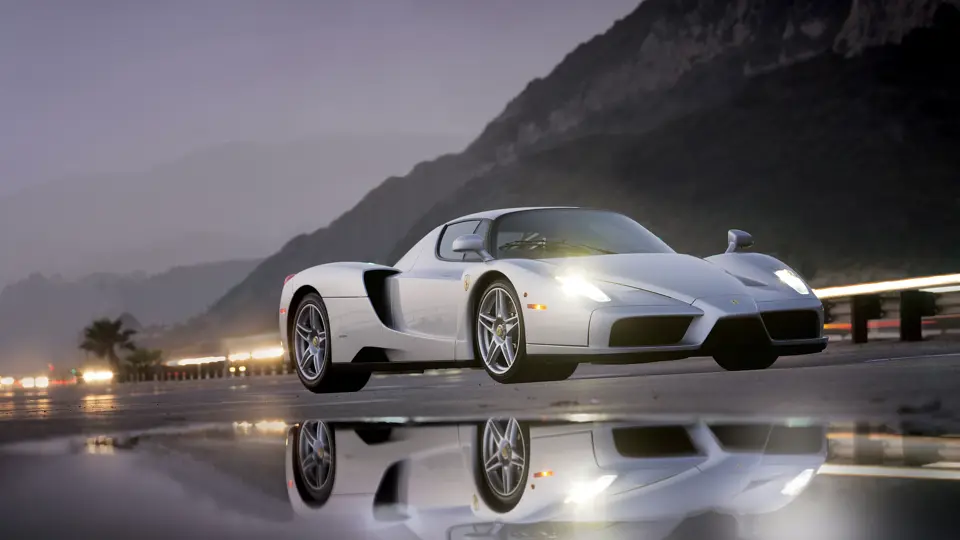
 | Phoenix, Arizona
| Phoenix, Arizona
